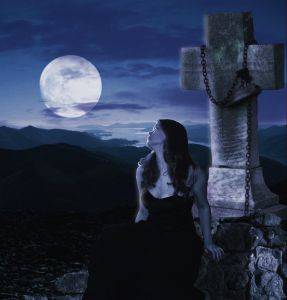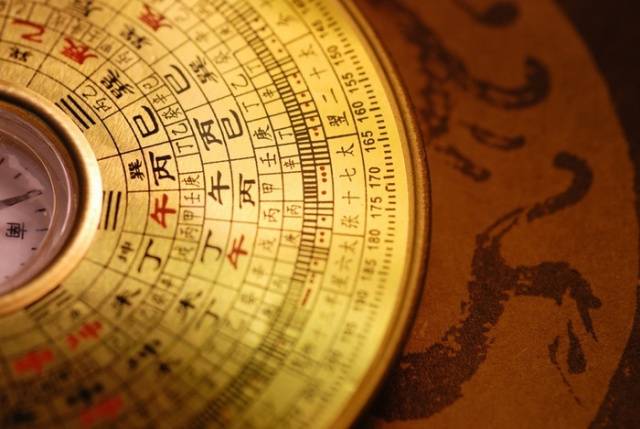The Legends of Vampires & Werewolves
Legends of vampires and night stalkers have been around for centuries, the mystery of the night creature is eternal. Many cultures believe in the myth of the night stalker and take their precautions against the undead, the creatures who seek blood by night. Each culture has a name for the night creature. The Latin, Sanguisuga, the Serbian, Vampir, the Greek, Brucolacas, the Slavonic Magyar-vam (blood), Tpir (monster), the English, Vampyr, the Polish, Upirs, the Russian, Upyr.
Historically in Europe, men and women conjured a frightening picture of the abilities of the vampire, believing the vampire to have hypnotic powers that were used to overwhelm their victims. The vampire’s strength was that of ten men, he was a shape shifter, able to transform into a wolf, bird and a variety of birds or animals. He could travel at great speed and see in the dark, he also had the ability to disappear.
In order to keep creatures of the night at bay, people adopted a number of protective measures. They obtained vials of holy water, placed garlic and wolf bane around their windows, cruxifix were placed around the home and hung on the walls in every room. The only way a vampire could be killed was to put a stake through their heart.
India has a variety of night creatures, the Bhuta is found in the wilderness and its presence is signaled by a glowing light display. The Bhuta feed on rotting corpses, their bite carries with it disease, life threatening illness and death. The Brahmaparush seizes its prey by the head, it then punctures a hole and drinks the victims blood through the hole in the skull, it then feeds on the brain of its victims and dances around the corpse in celebration. The Churel is a very ugly female vampire, with wild hair, misshapen body, rough lips and a black tongue, the Churel preys on young men.
The African vampire, the Obayifo, hunts the tribes of Africa, it is said to be the spirit form of a male or female practitioner of occult magic, who leave their body at night in search of human blood. It first presents itself as a ball of light, then transforms into a vampire that claims its victim.
In China, the Chiang-shih appears as a green or white haze covered corpse with white hair, and attacks night travelers. The Chiang-shih has red eyes that glow, fangs and sharp claws, it has the ability to appear as a beautiful woman, or handsome man, and claim its victim, sometimes they reanimate a corpse.
The Count de Saint-Germain was known as the man who couldn’t die, he was a well-known immortal from the 1800s, he was an exceptionally intelligent man who could speak and write in several  languages, Arabic, French, Sanskrit, Latin, Greek, Spanish and Chinese. He was a self professed alchemist, who had lived for 2,000 years by imbibing a regenerative liquid that could prolong human life indefinitely. It was believed that the integral element in this life enhancing formula, was human blood. Saint-Germain was a skilled painter with an extraordinary ability mixing pigments, many famous painters pleaded with him to reveal his formulas, Saint-Germain was also a violin and harpsichord virtuoso. His knowledge of history was beyond belief because of his time on Earth. During social gatherings he relayed anecdotes from Babylonion court gossip, and he spoke eloquently of specific events in history, giving accurate details of interactions and conversations that had taken place hundreds of years before.
languages, Arabic, French, Sanskrit, Latin, Greek, Spanish and Chinese. He was a self professed alchemist, who had lived for 2,000 years by imbibing a regenerative liquid that could prolong human life indefinitely. It was believed that the integral element in this life enhancing formula, was human blood. Saint-Germain was a skilled painter with an extraordinary ability mixing pigments, many famous painters pleaded with him to reveal his formulas, Saint-Germain was also a violin and harpsichord virtuoso. His knowledge of history was beyond belief because of his time on Earth. During social gatherings he relayed anecdotes from Babylonion court gossip, and he spoke eloquently of specific events in history, giving accurate details of interactions and conversations that had taken place hundreds of years before.
Saint-Germain was light years ahead of other alchemists, and rumours surrounded that he had with his skills turned base metal into gold. He prophesied the future, drew flaws from diamonds, he actually spoke of a steamship of the future that he would have a hand in designing. He had knowledge of the political past, even after his seeming death there were recorded instances of his reappearance. It was believed by many that he had feigned his death just as he had done many times before, so that he could continue drinking his elixir of life.
Marie Antoinette received a letter of warning signed by the Count de Saint-Germain, after the fall of the Bastille in July 1789. Marie Antoinette’s confidant Madame Adhemar, met with the count five years after his death. He purported to have tried to prevent the Revolution but a fervent antimonarchist Cagliostro, had taken charge of the events. During the French Revolution, Saint-Germain revealed himself many times and was often standing sadly next to the gallows. He had the ability to become invisible, this was witnessed on many occasions, he could self-hypnotise and hypnotise others. Several paranormal researchers have spoken with the Count, always while he stood in the shadows, it is said that the Count moves through time as a vampire.
Ludovico an Italian scientist, wrote a book on vampires in 1530, he was burned at the stake for his beliefs. He believed that there was a biological cause for vampirism. In 1581, Jean Bodin wrote Del la demonomanie des sorciers, he believed that spirits communicated with people and that witches did possess daemonic powers. He wrote about witches and sorcerers who made pacts with Satan, had the ability to fly and shape-shift into animal forms, and made pacts with evil spirits. In 1657, author Fr. Francois Richard, wrote about vampirism and witchcraft being intertwined, in 1679, Phillip Rohr wrote a German text on vampires, these works and others influenced the wave of vampire hysteria.
Stone Age artists painted pictures of creatures on cave walls, this is the world’s oldest cave art. Native American tribes looked to the wolf as a teacher and revered it just as the early Europeans had, Native American tribes recount stories of fox-people and believe humans and animals were one. In tribal myths there are stories of women giving birth to werecreatures. Totem clans were formed by early cultures throughout Asia, Africa, America and Europe, worshipping deities that were half animal half human. Skins of wild animals were worn during battle by warriors. The werewolf is called vlukodlak (wolf haired) in the Slavonic languages.
In old English were means (man), in French the werewolf is known as, loup garou, in Italian, lupo manaro, in Polish, wilkolak, in Portuguese, lobizon, in Greek, brukolakas, in Russian, olkolka. In early Europe the shamans created magic that allowed them to reach a trance state, they then appeared to transform into wolves. Those who against their will became werewolves, were the unlucky ones who had fallen foul of unethical sorcerers who transformed them with the curse of lupine transformation.
To become a werewolf the sorcerer covered his entire body with an ointment made of the fat of a freshly killed animal, combined with a mixture of special herbs. Those who wanted to perform the lupine transformation, would wear a belt of wolf skin around the waist, then cover their entire body with a wolf pelt. To hurry the shape shifting process, beer mixed with blood was drunk, while an ancient magic incantation was recited.
The first official execution of werewolves took place in Switzerland in 1407, several people in Basel were accused of being werewolves, they were tortured and burned. The most cases of werewolfism were in France, recording 30,000 cases. Trials began in Pligny in 1521, when three men admitted to consorting with she-wolves and daemons in order to transform themselves into wolves. After undergoing torture, they admitted to killing and devouring many children over a period of nineteen years.
Peter Stubbe of Cologne was an infamous self confessed werewolf, saying he possessed a magic belt, that when worn, could transform him into a werewolf, he returned to human form after he removed the belt. His magic belt was never found, in 1589 he was beheaded for his crimes. In 1610, an eminent judge of Saint-Claude in the Jura Mountains, observed a family of werewolves while they were imprisoned. He said their fingernails turned horny and claw-like, their eyes turned gleaming red, their hair sprouted and their teeth became sharp and long.
Catherine Deshayes was born in Paris in the 17th century, in 1658, at age 20 she married Antoine Montvoisin, a man with few prospects. She was a gifted psychic, midwife, herbalist and beautician, who professed to know the secrets of the ancient queens of the Nile. She was also in possession of an ancient elixir, that if taken in correct dosages, promised longevity. The potion contained the magic to transform old men into young strapping men, and tired, worn women into glamorous young women. Mrs Montvoisin also dabbled in deadly poisons, boasting to her husband that if all her potions were poured into the River Seine, half of Paris would be killed.
Catherine became a well-known occultist, she had a shop offering horoscopes and tea leaf readings to her clients, she was a gifted astrologer and in demand. She began tea leaf reading when she realised that aristocratic ladies liked to drink tea. She gathered a high profile clientele, among these, religious leaders and well to do merchants. She gave herself the title of the new Madonna, and because of this was brought before a tribunal of the Catholic Inquisition, concerned about herself confessed, supernatural powers.
Catherine Deshayes Montvoisin, was far cleverer than all her inquisitors, who believed her work was Satanic and she was in league with the Devil. She was convinced that she was an Angel of Mercy, sent by god to help mankind. During her inquisition she began quoting the Bible, the passages she quoted supported her practices. The learned men of the tribunal were certain that she was a charlatan, but had no definitive proof that she committed any crimes. She was found innocent and returned to her shop in Paris, the publicity made her even more sought after, and people would queue up outside her shop each morning waiting for her to arrive and open it. People believed, as she was found innocent, the church had blessed her and her work, making her the most popular occultist in all of France. Nobility, aristocratic ladies, merchants, housewives and ladies of the court came to see Catherine Deshayes Montvoisin.
Because of her new found popularity, Catherine wanted to move to new premises more fitting to the high class clients she was seeing. An elderly, very wealthy client, owner of a baronial mansion, agreed to remember Catherine Montvoisin in her will, within a short time of the gentleman’s will being signed, he contracted a mysterious ailment and died.
After her inheritance Catherine Montvoisin became La Voisin, the high priestess of a Satanic cult, La Voisin became well known in French society. The nobility flocked to her headquarters, people believed she had control over the powers of darkness. La Voisin charged exorbitant fees, which her clients were happy to pay for a consultation with her. Wearing a red ermine lined robe, with gold coins attached by silver thread, her blonde hair flowing loosely and reclining on a gold, gilded throne, La Voisin sat in a darkened chamber and received her clients, they were like subjects bowing before their queen.
Businessmen visited her, requesting Satanic aid from her occult practices, she promised them that Satan would enhance their endeavors, they must first bow to the powers of darkness and accept Satan into their lives. The clients first had to attend a workshop of secret rites, worshipping Satan, and bring with them a bag of gold to lay before Satan’s altar. Aristocrats, noblemen and those who were curious, paid enormous amounts of money to witness the rites conducted inside La Voisin’s mansion. Nefarious activities were carried out during these secret rituals, there was talk of newborn babies being sacrificed. The goings on finally caught the attention of a detective named Desgrez, who discovered several high ranking officials were part of the La Voisin cult.
Due to the list of high profile members, including aristocrats and government members, police sought an audience with King Louis XIV. Fearing the activities at the mansion could lead to a revolution, the king suggested La Voisin be handed over to the inquisitors, and all the well known people involved in the Satanic rites be given time to leave the country. All of La Voisin’s records were then burned. There was a mass exodus of noblemen and their wives after the arrest of La Voisin, they all feared that she would talk and reveal their names under torture. The inquisitors subjected her to extreme torture, which led to her confessing that in her role as High Priestess of her cult, 2,500 babies were sacrificed to Satan, she was condemned as a witch and burned at the stake.
In 1484, at the behest of Pope Innocent VIII, the papal bull Summis Desiderantes Affectibus was issued. The Pope authorised two Dominican inquisitors, Jacob Sprenger and Henrich Institoris (Kramer) to develop an official handbook for professional witch hunters, and in 1486 the two witch hunters published the Malleus Maleficarum. The Malleus Maleficarum condemned all those who professed the acts of daemons only existed in troubled minds. All people were to abide by the rules of this book, and anyone found consorting with daemons and became witches, must either relinquish their evil ways or face torture and death. It was only in Scandinavian countries that the ratio of men and woman accused of witchcraft was the same. A witch could not be put to death unless she confessed her sins, admitting her dealings with the Devil. Through torture confessions were gained, and once the confession was elicited from the witch she was absolved of sin, reconciled with the Church and burned at the stake.
Dr. Steven Kaplan, who was a parapsychologist became interested in vampires in 1972, by 1982, he had established the Vampire Research Center in Elmhurst, New York. Through his extensive study of historical and modern day vampires, he found a subculture of vampires. The Vampire Research Center organised a census in 1989, and found the average female vampire was 23 years old, had brown eyes and black hair, was approximately five foot six, weighing 120 pounds. The average male vampire was 26 years old, had brown eyes and brown hair, and was approximately five foot ten, weighing 170 pounds. He categorised them into three categories. (1) Fetishists, erotically attracted to blood. (2) The initiators, vampires who wore capes, slept in coffins, adopted Carpathian mannerisms in a bid for power, eternal life, attention, charisma, sensuality and sexuality. (3) These are the most frightening, they are the real vampires, men and women with a physical addiction to blood and a desire to drink it, believing it will prolong their lives. This type of vampire, through blood drinking experiences a sexual high, these would be considered the most dangerous type.
Some vampires take their need for blood to the extreme and kill their victims, others with this extreme leaning find more acceptable ways to assuage their thirst for blood. Michelle Belanger, author of Vampires in Their Own Words (2007), describes herself as a psychic vampire, and believes there is a growing community of vampires, who are everyday people. She says some people identify with the vampire and the need to take the vital life force from others, this is done in the form of psychic energy, and only taken from willing donors. Some vampires take small amounts of blood from willing human donors, these vampires are called sanguinarians. The psychic vampires take part in a mutual exchange of energy with their donors.
The average age within the vampire community is mid thirties, with individuals in their fifties, sixties and seventies. These vampires come from a variety of religious backgrounds, from atheist to Buddhist and everything in between, they are on average well educated and have attained a higher level of learning, usually possessing a degree or diploma. The modern day vampires have a need to absorb a life energy, or blood from a source outside themselves, they do this in the belief it will enhance them spiritually, physically and psychically.




